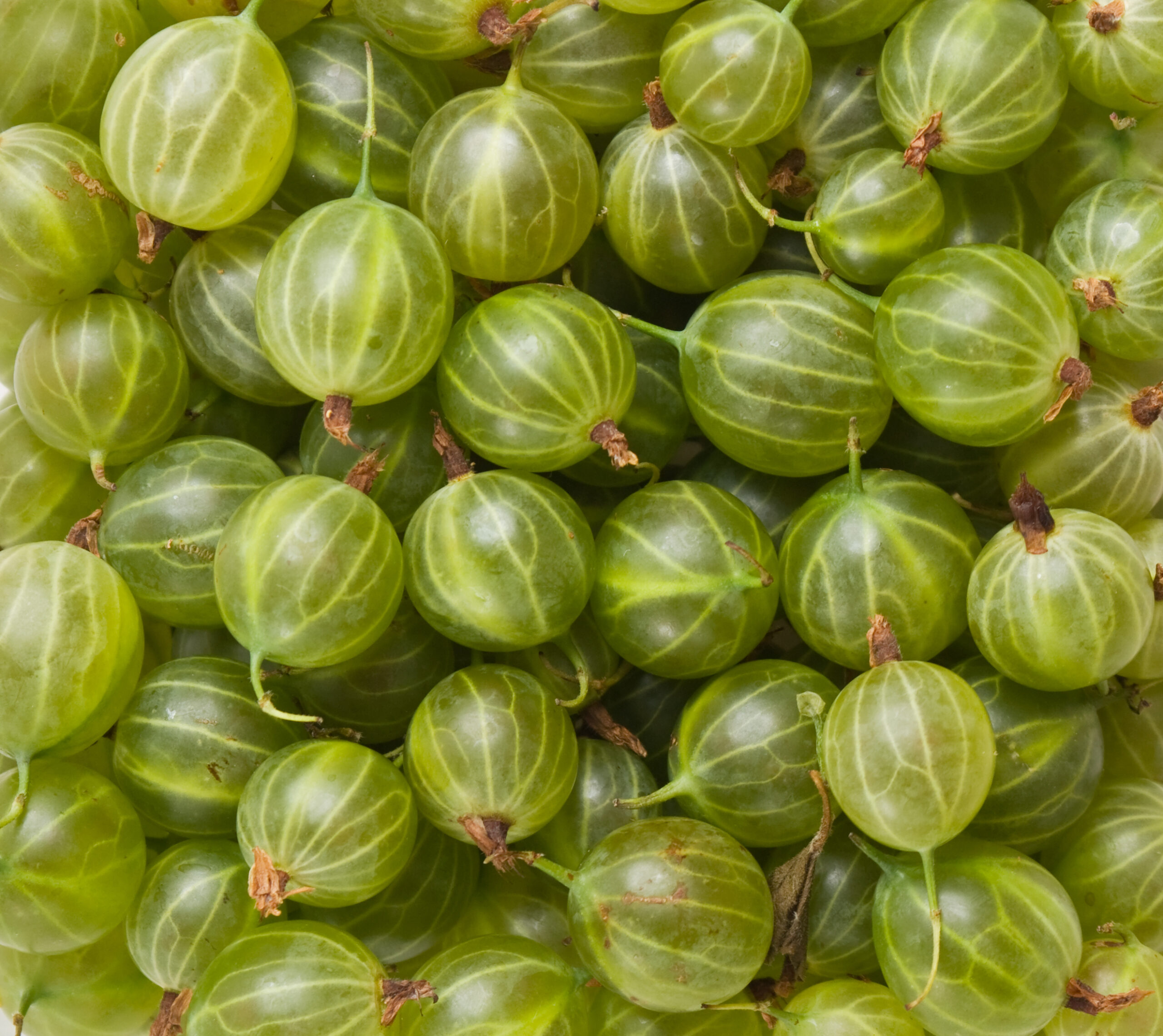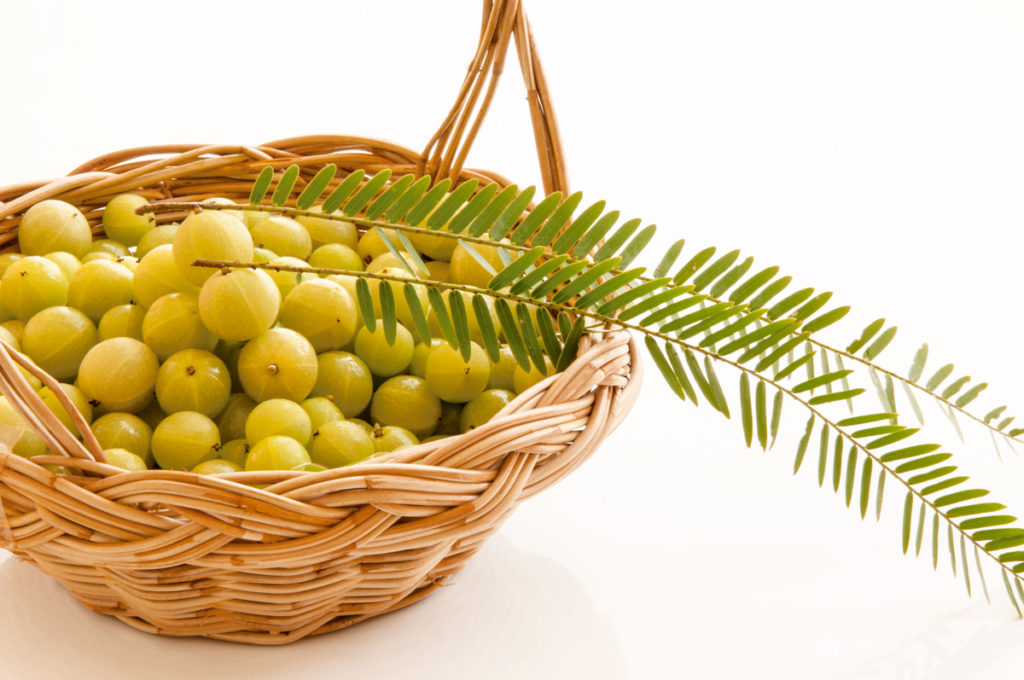

Amalaki is renowned for its immunity and anti-aging benefits. It is considered the “mother” as it performs the job of taking total care of the mind-body system and is known as the ultimate healer due to its immune restorative properties. In the Charaka Samhita – one of the root texts for Ayurvedic science – Charaka states, “Of all the rasayanas, Amalaki is revered as one of the most potent and nourishing; This herb is the best among rejuvenative herbs.” Rasayanas in Ayurveda are rejuvenating therapies which support antiaging and longevity.
Sold as a powder, Amalaki (ah-mel-ah-key), commonly known as Indian gooseberry or amla, is considered one of the most powerful rejuvenating herbs in Ayurveda. In Sanskrit, Amalaki means “the sustainer” and has traditionally been prescribed to strengthen the immune system and cool the body.
Amalaki is a superfood that packs heaps of nutrients in a small dose. That’s why it’s called a superfood. Amalaki has been used for centuries to heal and support the immune system. When Amalaki comes up in conversations with clients, it’s often praised for its sheer nutrient content, giving users 30-percent of daily Vitamin C intake in one teaspoon. The herb is a strong natural antioxidant that’s one of the reasons why it such a powerful immune strengthener.
There’s also iron, fiber, and very little sugar. Just make sure you purchase organic Amalaki. If it’s full of pesticides, it can do more damage to your body than if you weren’t eating this ayurvedic herb in the first place.
A little boost of Vitamin C is just the beginning when it comes to the actual benefits of taking this powerful herb. We’re talking better skin, weight management, antioxidant promotion, and digestive health improvements.
This healer herb contains five of the six tastes according to Ayurveda, lacking only in salty. It is sour, sweet, bitter, astringent and a slightly pungent. This range of tastes make it beneficial for all Doshas, which means – everyone can benefit from this healer herb, regardless of the individual mind-body constitution. Its sweetness and sourness creates a strengthening and balancing effect on Vata, its sweetness and astringency balances Pitta, and its astringent and pungent aspects help to dry out the dampness of Kapha.
If you’re taking an Amalaki powder, mix 1/4 to 1/2 teaspoon into warm water once or twice daily or as directed by your health provider. Or you can try adding to apple juice or make into a tea. It’s a bit sour and tart, like cherries, so smoothies and sweetened juice are the easiest ways to sip it.
Another way to take this herb is through Chyawanprash, which is an herbal jam made from a base of Amalaki combined with sugar, honey, ghee, sesame oil, berries, and spices. Chyawanprash can be taken by itself, stirred into milk or water, or spread on toast. The usual dose is 1 to 2 teaspoons, once or twice daily.
Amalaki is also one of the three ingredients in Triphala, which is one of Ayurveda’s most popular herbs. Although it can vary, a typical recommended dose of is 500 to 1,000 milligrams, twice daily. I particularly like VPK’s Amalaki – as it is organic and sustainably sourced. So feel free to use this link to hop onto their site and check them out.
Amalaki is just one way to promote anti-aging in Ayurveda. Download our free Anti-Aging Skin Care Regimen below to find out Ayurveda’s anti-aging techniques that actually work!
In health,

The Holistic HIghway integrates traditional Western medical practices with Ayurveda medicine, creating a focus on prevention through nutrition, diet, and exercise; use of the latest genetic testing and other diagnostic techniques; and prescribed combinations of botanical medicines, supplements, therapeutic diets, detoxification programs, or stress-management techniques.

Integrative Health Expert | Ayurveda Practitioner | Author | Speaker
Kerry is a globally recognized leader in integrative medicine and the science of health known as Ayurveda. She is passionate about raising awareness of the need for a change in contemporary medicine that focuses on patient empowerment and a health-based (rather than disease-based) medical system.
Kerry is connected with The University of Pittsburgh Center for Integrative Medicine and remains a pioneer in the field of integrative medicine where she has developed a personalized system to manage chronic disorders by incorporating fundamental changes in diet, behavior, and stress while focusing on genetics.
This individualized program is so successful that many of her clients have achieved maximum healing and vitality after years of chronic problems!
More to Explore